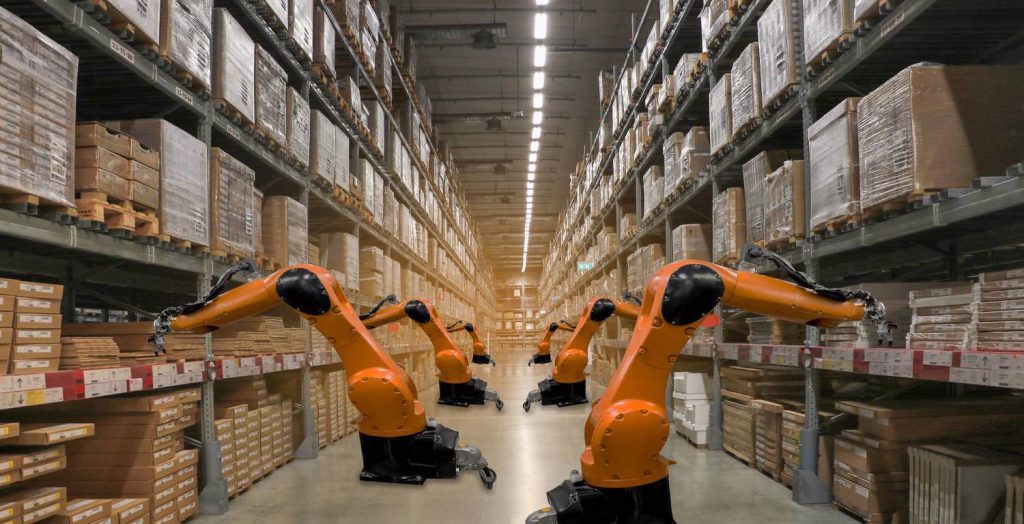Consumer goods manufacturers have faced significant challenges over the past few years due to rapidly changing demand and supply disruptions in their end-to-end supply chain. As a result, manufacturers have realized the need to strengthen their resilience and have prioritized assessing their manufacturing capacity to maximize output and automation.
To achieve this, organizations are investing in capital plans to open new production facilities or add production lines and optimize the performance and flexibility of lines within existing factories. Consequently, organizations can maximize the utilization of factory assets to meet constantly changing consumer demand.
Further, companies aiming to increase connectivity within their factories and across the enterprise use analytics for better and faster insights. These connected factories require streaming data from every sensor, system and video feed to understand how to improve performance, quality, safety and cost-efficiency. Manufacturers have also identified a pivotal need to connect the network of factories with the end-to-end supply chain to enable simulation and scenario planning for navigating disruptions with an optimized response.
How can you ensure a successful connected factory strategy? Here are the top five questions to ask:
1. Can you manage big data streaming from sensors?
With IoT data streaming through cameras and millions of sensors, companies must scale to take advantage of high-frequency data to identify anomalies, make decisions and take action in a timely way. Advanced data integration capabilities capture unstructured and structured data critical to efficient operations and then combine the streaming data with manufacturing data from enterprise systems. Providing a single version of data for users across the organization, disparate data must be unified across different environments and filtered in real time to keep the most relevant information to drive decisions.
2. Can you automatically detect problems before they occur?
Harnessing data from sensors and cameras, advanced analytics detects excursions earlier and prescribes corrective actions to prevent quality issues. Early identification of maintenance needs increases the performance of an asset while also enabling you to optimize your maintenance plans and reduce unplanned downtime. Unexpected complications are inevitable; therefore, it’s essential to understand the impact of multiple scenarios for disruptions and proactively recalculate the next best action. This helps reduce waste and improve manufacturing performance.
3. Do your analytics provide real-time insights?
The velocity of streaming data and the complexities of manufacturing processes have evolved to be above human-level speed or capability. Therefore, analytics must automate and scale to get valuable insights while events happen, not just retrospectively. Event stream processing capabilities combined with AI and machine learning remove the latency between data signals and timely actions. Rather than spending time looking for problems, let AI and machine learning models do the heavy lifting of identifying and prioritizing where technicians should be focusing their time.
4. Can you simplify and accelerate model deployment?
The speed at which models are deployed directly affects how well you can use those models to increase manufacturing productivity. A holistic solution for the end-to-end analytics life cycle – from data to model development to model deployment – accelerates the process of using data for better decisions. Improving connectivity within and across factories requires numerous analytical models to optimize manufacturing processes. Subsequently, data scientists and business analysts need the ability to build, deploy and monitor thousands of machine learning models in a repeatable, efficient way.
5. Are your analytics easily consumed across the organization?
Analytics are only as valuable as the decisions they influence. Accordingly, analytics must be approachable for multiple organizational skill levels – from data scientists to machine operators, maintenance technicians or engineers. Data scientists require the flexibility to code in multiple programming languages. At the same time, business analysts and executives need transparent, understandable analytics that empower them to use machine learning to expedite and enhance decision making.
What’s next?
Connected factory strategies are top of mind for consumer goods companies to accelerate productivity and control costs while improving safety and quality. Organizations are prioritizing their ability to manage streaming data, detect quality and maintenance disruptions earlier and faster, gain real-time insights from machine learning and AI, fast-track model deployment for more effective decisions, and expand analytics consumption across the enterprise.
By adopting a connected factory strategy, consumer goods companies can make real-time data-driven decisions, improving operational efficiency and reducing costs. At the same time, they increase their agility to respond to ever-changing consumer demand.
Looking for a quick way to get started? Learn more about how a world-leading consumer goods company gained a 10% improvement in overall equipment efficiency and a 30% reduction in unplanned downtime by optimizing its supply chain using SAS® analytics and IoT.
Jessica Curtis and Dan Woo, Advisory Industry Consultant at SAS, contributed to this article
 Dan Woo serves as a trusted advisor to SAS Consumer Goods customers to help them accelerate in their digital transformation and maximize the value of their analytics investments. Dan joined SAS in 2018 as a Consumer Goods industry veteran having spent 26 years in Supply Chain Leadership roles for Nestlé. Prior to Nestlé, Dan worked for Accenture where he led systems integration projects with consumer goods and manufacturing clients.
Dan Woo serves as a trusted advisor to SAS Consumer Goods customers to help them accelerate in their digital transformation and maximize the value of their analytics investments. Dan joined SAS in 2018 as a Consumer Goods industry veteran having spent 26 years in Supply Chain Leadership roles for Nestlé. Prior to Nestlé, Dan worked for Accenture where he led systems integration projects with consumer goods and manufacturing clients.





1 Comment
Jessica I am interested in SMART manufacturing solutions in Lifescience, Bio Health manufacturing. Do you have a Vertical Lead, solutions expert in the EMEA landscape